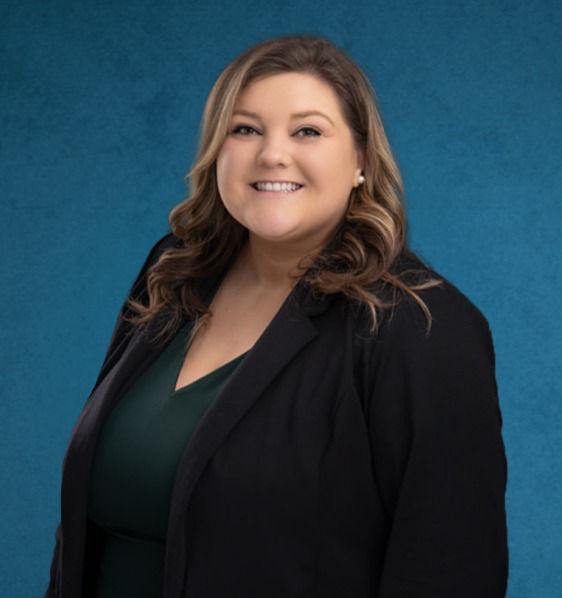CALL (800) 863-5312 TO SPEAK WITH A ZINDA LAW GROUP BEDSORE ATTORNEY TODAY
Bedsores and pressure ulcers are unfortunately prevalent among elderly patients living in nursing homes. These conditions are easily preventable by giving a patient appropriate care. When bedsores or pressure ulcers do arise, this may indicate negligent and inadequate care on part of the nursing home and its employees. If nursing homes and nursing home employees fail to provide proper care, they may be liable for any resulting damages.
If you or a loved one is suffering from bedsore or pressure ulcer injuries and are interested in filing a claim, call Zinda Law Group at (800) 863-5312 to receive a free case evaluation with one of our experienced personal injury lawyers.
WHAT ARE BEDSORES?
Bedsores are a type of injury to a person’s skin. The injury is caused by prolonged pressure on the skin. In most cases, bedsores develop on skin that covers bony areas of the body such as a person’s heels, ankles, shoulder blades, hips, and tailbone. Although most bedsores take a couple of days to develop, some cases can arise in a matter of hours.
Statistics
- Each year, more than 5 million people in the United States develop bedsores
- Up to 60,000 Americans die every year due to bedsores and pressure injuries
- Patients with pressure injuries have a higher mortality rate than other hospital patients: 9.1% mortality for pressure injury patients versus 1.8% for all hospital patients.
- Patients with pressure injuries have more expensive hospital stays with an average of $36,500, compared to the overall average of $17,200.
- In 2004, about 159,000 current U.S. nursing home residents (11%) had pressure ulcers. Stage 2 pressure ulcers were the most common.
Symptoms
There are several symptoms associated with bedsores and pressure ulcers. The presence of some or all of the following may indicate the presence of a bedsore:
- Swelling
- Discoloration
- Changes in skin textures
- Pus-like draining
- Warm or tender skin
- Foul or unpleasant odor
Risk Factors
The risk of developing bedsores increases if you have difficulty moving or need to be confined to a bed. This is why many patients in nursing homes develop this type of injury. Other risk factors may include:
- Immobility
- Poor nutrition and hydration
- Medical conditions impairing blood flow
- Incontinence
- Lack of sensory perception
Prevention and Maintenance
Understanding how to prevent bedsores may help ensure that you or a loved one does not have to experience the debilitating injury. In general, the best way to prevent bedsores is by frequently repositioning yourself while in bed to prevent prolonged pressure on a particular area of the body. Other measures that may decrease the risk of bedsores occurring include:
- Proper nutrition and hydration
- Refraining from smoking
- Inspecting your skin and body frequently
- Exercising often
- Maintaining a proper skincare regimen
Additional Complications
Bedsores are painful by themselves. Making matters worse is the fact that several complications may arise as a result of the presence of bedsores. Some complications may require prolonged medical care and others may even be life-threatening. Examples of complications may include:
- Skin infections
- Bone and joint infections
- Cancer
- Sepsis
Treatment
When bedsores do develop, there may be several options to treat the condition. The most common methods of treatment include:
- Reducing pressure on the wounded area
- Cleaning and dressing the wounded area
- Removing damaged skin or tissue
- Antibiotics or other prescription drugs
- Change in diet
- Surgery
ARE BEDSORES AND PRESSURE ULCERS THE SAME?
Yes. Bedsores, pressure sores, pressure ulcers, decubitus ulcers are all used interchangeably to describe the injury to the skin and underlying tissue resulting from prolonged pressure on the skin.
STAGES OF BEDSORES
When doctors and medical professionals treat bedsores, they may refer to different “stages” of bedsore injuries. The stages of a bedsore injury are based on how deep the sores are. A doctor will tailor a treatment plan based on what stage the injury is in. If detected early, bedsores may heal in a few days. However, if bedsores go days, weeks, or months without treatment, they can get worse and require prolonged medical treatment. Described below are the four stages of bedsores.
Stage 1
Stage 1 is the mildest stage of a bedsore injury. At this stage, only the uppermost layer of a person’s skin is affected. Symptoms of stage 1 bedsores likely include slight pain, itching, and tender skin. The best way to treat stage 1 bedsores is to remove the pressure from the affected area and wash the skin. If treated properly, stage 1 bedsores may subside as early as two to three days after the onset of the injury.
Stage 2
At stage two, the sore digs deeper into a person’s skin and affects more than just the outermost layer. Symptoms of stage 2 bedsores likely include broken skin, pus-filled blisters, increased pain, and redness or swelling. Stage 2 bedsores should be treated by removing pressure, cleaning the skin with a saltwater solution, and bandaging the affected area. Stage 2 bedsores may take anywhere from three days to three weeks to heal.
Stage 3
Stage 3 bedsores have surpassed the first layer of skin and have reached the fat tissue below the skin. At this stage, the sore may look like a hole or crater and may have a foul or unpleasant odor. Other symptoms of stage 3 bedsores include red edges, severe pain, and pus drainage. Stage 3 sores often require medical attention from a doctor or trained professional. Recovery time may be anywhere from one to four months.
Stage 4
Stage 4 bedsores are serious injuries that may affect not only the skin but a person’s muscles or ligaments. At this stage, the sore will be large and may even be blackish in color if the skin in the affected area has died. If you believe you are suffering from stage 4 bedsores, call a doctor immediately. Only a doctor should treat stage 4 bedsores. Even with proper treatment, stage 4 bedsores may take months or even years to heal.
WHO IS LIABLE FOR BEDSORE AND PRESSURE ULCER INJURIES?
The Nursing Home or Hospital
Medical care professionals have a duty to provide patients with comprehensive care and not neglect their patients. When a bedsore injury occurs, this may suggest that improper care has been given. In such cases, the nursing home or hospital where the patient is staying may be held legally accountable. Under theories of vicarious liability, the nursing home or hospital may have to pay damages for costs incurred as a result of bedsore injuries that arose because of an employee’s negligent care.
Employees
Nurses, doctors, and other medical staff members who fail to provide proper care to patients may also be liable for bedsore injuries. The nursing staff is under a duty to develop an effective care plan to minimize the risk of developing bedsores wounds. For instance, the employees of a nursing home or hospital must change the patient’s position at frequent intervals. The staff members must also properly treat affected areas at the first sign of injury. When these standards are not adhered to, the employees may be found liable for negligence or neglect.
If you believe a bedsore injury was caused by a nursing home or nursing home employee’s negligence, there are several steps you can take to strengthen your claim. Such steps include:
- Taking pictures of the wounds and noting the date the wound appeared
- Obtaining copies of any former complaints filed against the medical care facility
- Requesting performance reports of employees in charge of caring for the patient
- Asking the medical care facility for a thorough explanation of steps and procedures taken to care for the patient
CONTACT OUR BEDSORE LAWYERS TODAY
Handling a bedsore injury lawsuit by yourself can be a daunting task. Thankfully, Zinda Law Group’s pressure ulcer and bedsore attorneys are eager to help you navigate the claim filing process. While you focus on healing or taking care of an injured family member, our attorneys may work on building your case to best protect your legal rights. With a Zinda Law Group personal injury attorney on your side, you may receive:
- High-Quality Client Service: Our team aims to provide clients with quality representation by treating every case with the diligence and respect it deserves.
- Access to Resources: Zinda Law Group builds claims by utilizing a variety of cutting-edge resources. For instance, our team may conduct thorough investigations, hire qualified experts, and utilize state-of-the-art accident reconstruction technology.
- Fierce Negotiators: A major component of any personal injury case is negotiation. Whether it be with insurance companies or opposing counsel, Zinda Law Group’s attorneys have years of negotiation experience to help give our clients a shot at fair compensation.
- No Win, No Fee Guarantee: Zinda Law Group also believes that an injury victim should never have to worry about being able to afford legal representation. That is why we offer 100% free consultations, and why you pay nothing unless we win your case. That’s our No Win, No Fee Guarantee.
If you would like to speak with a Zinda Law Group personal injury lawyer, call Zinda Law Group at (800) 863-5312 to receive your free case evaluation.
Meetings with attorneys are by appointment only.

























